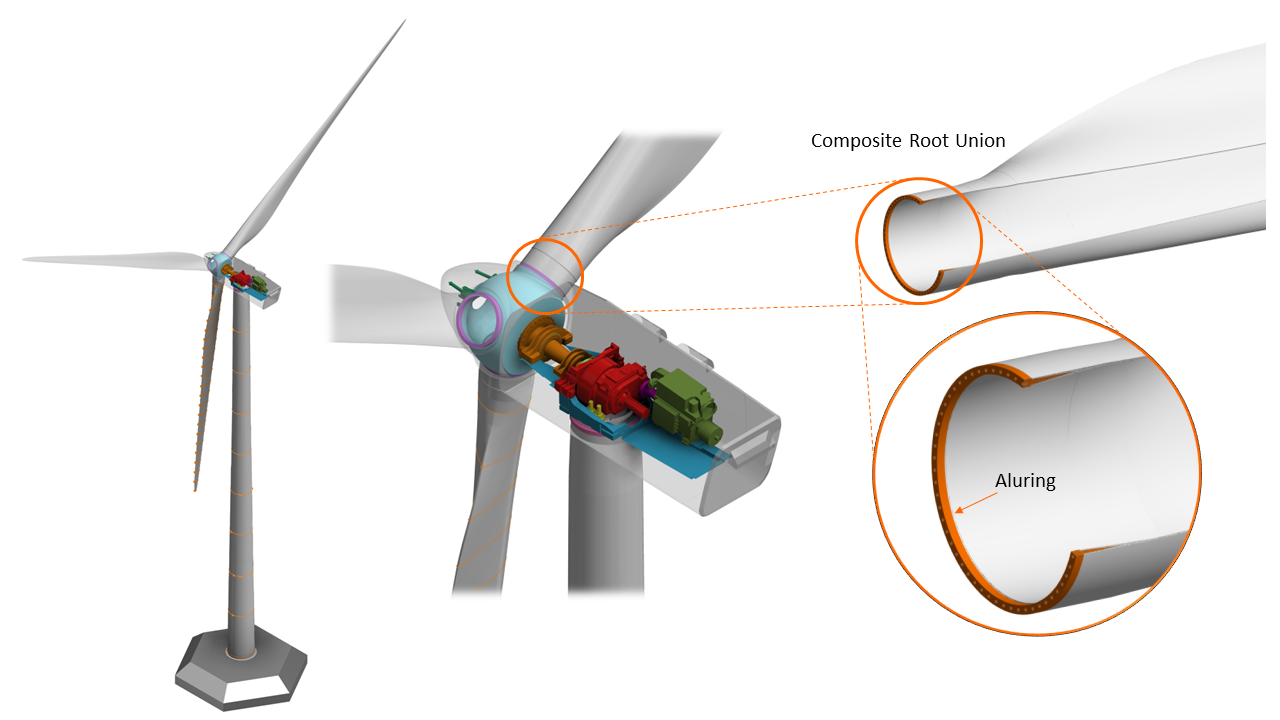
How to reduce by 50% maintenance works on wind turbine Aluminum Rings
The Aluminum Rings (Aluring) crack propagation is one of the most common problems related to wind turbine blades internationally (more specifically on V4X and G47), in countries that were early adopters of wind power technology.
These cracks commonly appear at the drilled bolt holes’ edges of the Alurings, being the sharp design of the bolt end (as a result of the manufacturing process) the source of the stress concentration that makes the crack appear and grow, together with the wind turbine operational loads.
Different cracks at different points of the Aluring can cause high risk to the wind turbine and the wind farm production, regardless of the high maintenance costs that this component implies. This is due to the risk of the wind blade detaching and its undesired consequences, which results in the dismantling of the blade and, therefore, the inevitable production stoppages.
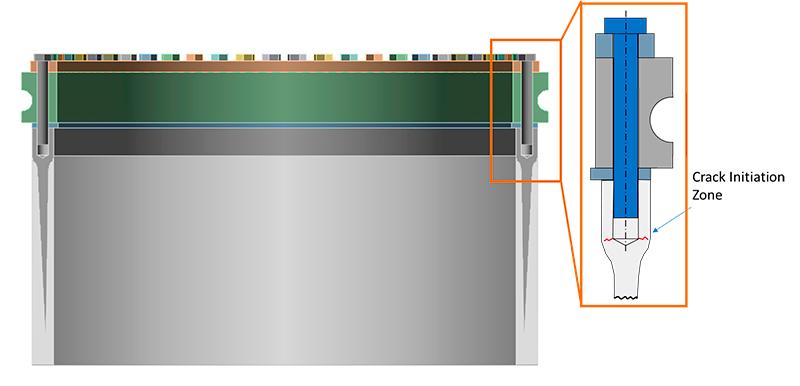
Draft of the Aluring Assembly, crack initiation zone
Crack growth analysis in V47 and G47 Aluminum Rings
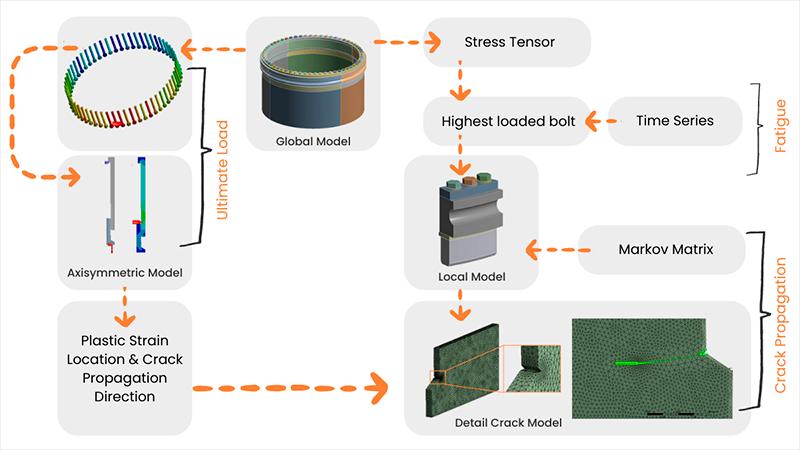
Nabla’s FEM scheme
For this type of analysis, we start from the development of a finite element model of the blade root assembly, out of which we will extract all the necessary information to begin with our crack growth analysis.
It is worth mentioning that as of today, at nabla wind hub we are pioneers in applying this kind of study, more often applied in aeronautics, nuclear, and oil & gas, to model and analyze the complexity of the wind turbine components and its circumstances.
The crack growth analysis is based on energetic theories of fracture mechanics. To identify the critical points on which this analysis has to be carried out, nabla has developed a methodology based on extreme and fatigue loads analysis from where we can identify the following:
Inputs obtained from the extreme load analysis:
- Risk of extreme load failure.
- Location of the critical stress concentration area in the assembly.
- Direction of the crack propagation.
Inputs obtained from the fatigue analysis:
- Risk of fatigue failure, analyzed on each of the bolts that compose the Aluring, under site specific conditions.
- Total generated damage and life expectancy for each of the bolts.
- The highest loaded bolt.
Considering the location of the critical stress concentration, the direction of the crack propagation, and the highest loaded bolt, we proceed to analyze the detailed crack propagation in the Aluring.
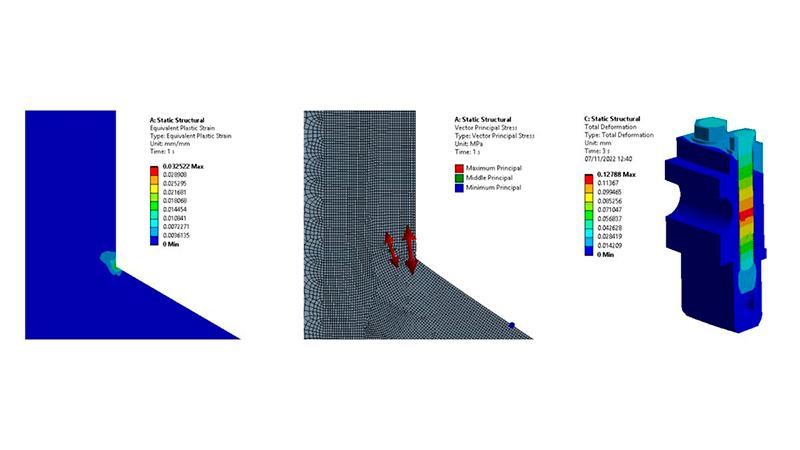
Crack initiation zone and stress direction | The most critical bolt model
With these 3 inputs a more accurate model for performing the crack propagation simulations is built, defining an initial quality crack with a notch of 0.127mm (as per aluminum required for aircraft industry by the European Union Aviation Safety Agency (EASA) and the Federal Aviation Administration (FAA)).
From these simulations, the detailed model of the crack propagation is obtained, from which we get the crack length extension, as well as the failure mechanisms (plastic collapse, brittle fracture, or plastic radius) and the time to failure.
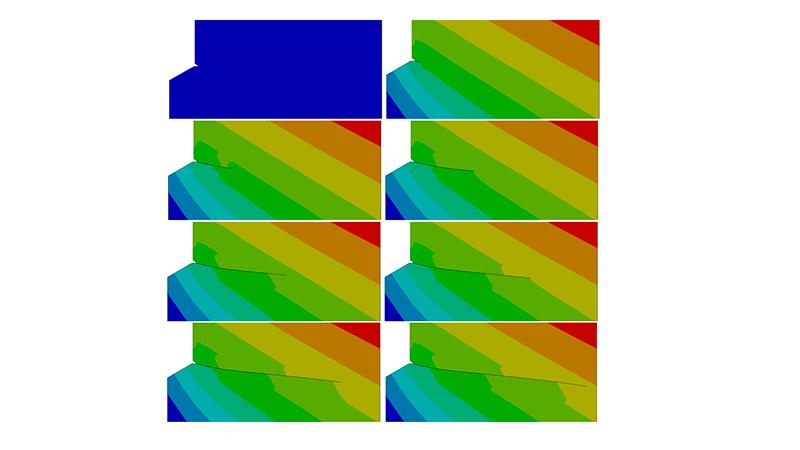
Crack propagation simulation example
Thanks to this detailed crack propagation analysis, we can foresee the crack propagation time until failure and the root cause of the same, being able to prevent the risk in the wind turbine blade, and the asset itself, while reducing the continuous maintenance operations in our wind blade aluminum ring.
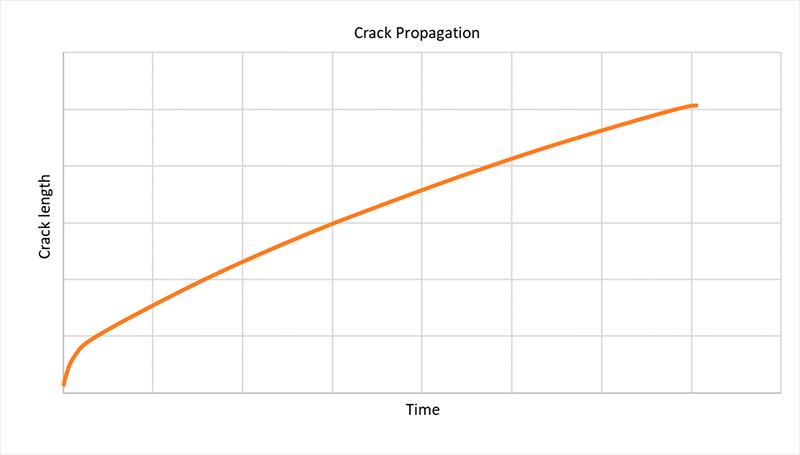
Crack propagation graph
From nabla we recommend spacing the inspections in a strategical and controlled way depending on the speed of the crack propagation with the site and operation conditions.
Share on Linkedin Share on Twitter Share on Facebook Share on Whatsapp